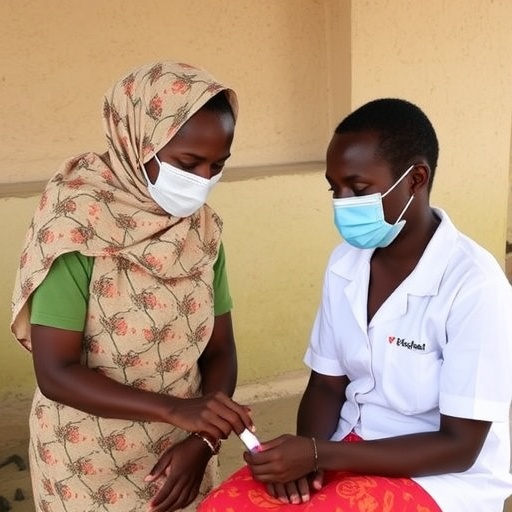Diagnostic and treatment advances are helping patients with Duchenne muscular dystrophy–one of nine major types of muscular dystrophy that affects males–live into their 30s and beyond, raising challenges in such areas as education, vocation, levels of independence, personal relationships, emotional health, and intimacy. To address these shifting circumstances, as well as reflect promising new treatment options, new guidelines aimed at physicians who care for DMD patients have recently been issued.
"This report emphasizes helping people achieve their best possible lives, not just prolong their survival," said David Birnkrant, MD, professor of pediatrics at Case Western Reserve University School of Medicine and director of the Division of Pediatric Pulmonary Medicine at MetroHealth Medical Center who helped lead a 25-member steering committee to coordinate eleven expert committees covering all aspects of DMD care. "Driven by patients, their families and advocacy organizations, this report reflects a fundamental change in DMD care," he says. "The document emphasizes quality of life by attending to psychosocial issues, care coordination, and improving patient transitions from childhood to adulthood."
The guidelines, also known as care considerations, were funded by the CDC's National Center on Birth Defects and Developmental Disabilities and recently published as three articles in The Lancet Neurology. They revise recommendations originally published in 2010.
DMD, which primarily affects males and starts in early childhood, is caused by a mutation in the DMD gene, the largest human gene identified to date. When normal, the genetic material provides instructions for making a protein called dystrophin, which stabilizes and strengthens muscle fibers. But boys diagnosed with DMD do not produce functional dystrophin protein, resulting in weakness of skeletal, respiratory, and heart muscles, leading to a shortened life span. Teens and young men may require surgery for curvature of the spine, a ventilator device to assist breathing, and a feeding tube to help ensure adequate nutrition.
As diagnosis and treatment options have improved patients are now aging into adulthood, increasing the need to sure they receive proper coordinated care. As more specialists become involved with DMD patients, the risk of care fragmentation increases. The report guidelines highlight the need for a single clinician, such as a neuromuscular specialist who has known the patient since diagnosis, to take a lead role. This helps ensure that other specialists, such as cardiologists, pulmonologists, critical care physicians, and orthopedic surgeons, are working together for the benefit of the patient, based on each patient's definition of a good quality of life.
The report also draws particular attention to new and emerging DMD treatments. Some of these drugs and strategies are in use now, while others are in the pipeline. For example, the FDA recently approved eteplirsen for patients who have a mutation of the dystrophin gene amenable to exon 51 skipping. Exons are the sections of DNA that code for a protein. Mutations in the dystrophin gene can result in faulty RNA that does not code for functional dystrophin protein. By removing a section of DNA, exon-skipping therapies seek to restore production of a functional dystrophin protein. An exon-51 skipping strategy is potentially beneficial for around thirteen percent of boys with DMD. Research is underway on other strategies, in the hope that genetic and molecular therapies will eventually benefit all patients with DMD.
Another recent treatment discussed in the new guidelines is deflazacort, the first glucocorticoid approved specifically for DMD, which decreases inflammation. "These therapies offer great promise, but also present a challenge since DMD is a rare disease, so the number of patients who can take part in clinical trials is relatively small," said Birnkrant. "But they are a huge advance, giving us the first treatments to address underlying genetic defects, rather than simply compensating for DMD's severe medical complications."
The updated version includes eleven topic areas, eight of which are revamped from the original guidelines. These are: diagnostics, use, and management of corticosteroids (which stabilize muscle strength and prolong walking ability in boys with DMD); cardiac care; pulmonary care; physical therapy; gastrointestinal and nutritional needs; orthopedic and surgical considerations; and psychosocial care. The three brand-new topics are primary care and emergency management; endocrine management (including growth and development and hormone deficiencies); and transitions of care across the lifespan.
"There is definitely a new optimism," said Birnkrant. "All of the specialties caring for DMD patients have shifted to more anticipatory strategies to achieve prevention, earlier diagnosis, and better treatment of predictable and potentially modifiable disease complications. The new guidelines are intended to provide a template for the best and most up-to-date DMD care. They will help us, as clinicians, to better understand and address the needs of our courageous patients and their families."
###
The new guidelines are available at cdc.gov/ncbddd/musculardystrophy/care-considerations.html.
For more information about Case Western Reserve University School of Medicine, please visit: case.edu/medicine.
Media Contact
Ansley Gogol
[email protected]
216-368-4452
@cwru
http://www.case.edu
http://casemed.case.edu/cwrumed360/news-releases/release.cfm?news_id=1095&news_category=8
Related Journal Article
http://dx.doi.org/10.1016/S1474-4422(18)30025-5




